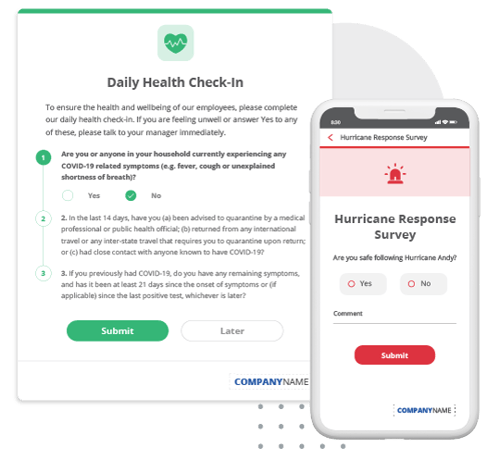
The world’s response to COVID-19 has created one of the most rapid workplace transformations in history. Not only has it prompted businesses to reshape the way they work, it’s also changing the future of internal communications.
Globally, the pandemic has seen business leaders reconsider the importance of internal communications in the future success of their business. Employers are having to adapt to fragmented workplaces, the rapid implementation of new technologies, and increased responsibility in ensuring the safety and wellbeing of their employees.
Employee trust, engagement, and knowledge have become the key ingredients businesses need to enable their continued growth and productivity. Despite that, 60% of companies say they don’t have a long-term strategy in place for their workplace communication.
It’s critical for businesses to know what the future of workplace communications looks like. These tips will ensure you’re best informed and armed to tackle the challenges – and reap the rewards.
1. Remote Working Disrupts Traditional Lines Of Communication
The ongoing pandemic has meant that office cubicles and brick and plaster workplaces have fast become relics of the past.
Before COVID-19, many organizations were hesitant to implement remote working initiatives for even just a day a week. Now the Global Mobile Workforce Forecast Update has estimated that over 40% of workers will be mobile by 2022. In the US, the figures will reach 75%.
Effective communication in the workplace is fast becoming the glue that joins individual workers into productive teams. Now, team leaders must equip themselves to manage remote teams scattered outside the office and around the globe.
Communication is an integral part of ensuring a seamless collaboration with different departments, driving employee engagement, and maintaining company culture within a fragmented workforce.
Our tools, as well as our delivery, must be as agile as our staff, mirroring the ways we already communicate. Centralizing company communication through an employee communication app keeps teams engaged and increases productivity when working from home.

2. Employee Health And Wellbeing Is A Necessity, Not A Perk
One of the biggest trends is the growing obligation of employers to take care of their people. Almost half of employees say that their workplace harms their mental health. According to a report from SHRM, nearly one in four employees report feeling down, depressed or hopeless.
It’s becoming imperative for employers to find new solutions to provide support in the workplace and protect employees against threats to health and wellbeing. Employee communication plays a key role here.
Screensavers are a powerful visual tool to inform staff of workplace wellness programs and initiatives, while also promoting positive behaviors by reinforcing safety messages.
Interactive Surveys can provide a better understanding of your staff’s wellbeing, build trust and uncover the needs of your employees. You can also create daily safety checklists that ensure your staff know that their safety is a priority.

Want to see how these message templates could help your organization?
Try them for yourself with a free 30-day trial of SnapComms.
3. Disparate Platforms Create Barriers to Engagement
We’ve already seen an explosion of new communication technologies entering the workplace in a bid to keep up with new ways of working.
Move over email, now there’s Slack, Google Hangouts, Microsoft Teams, Zoom, and more. A report from Slack found that employees hope to have even more communication tools available to them in the future.
But having so many different communication technologies across multiple platforms can hurt an employee’s ability to stay engaged. Two-thirds of workers waste up to 60 minutes at work navigating between different communication apps and programs.
When you have a lot of messages coming from lots of different places, it’s important to have a unified platform to use when communicating with your employees to get message cut-through.
Targeting and scheduling your messages will improve your ability to reach specific audiences. Use scrolling newsfeed-style Tickers to deliver status updates and announcements discretely, or Desktop Alerts to send video messages with updates or recorded meetings for a human touch.
4. AI and Chatbots Will Streamline Business Operations
AI is taking over - but it’s as not riddled with the same anxieties around machine learning and robot uprisings as it used to be. Chatbots have already entered the workplace and overall, it’s a welcome change. 77% of employees believe it will make their workplaces better.
Right now, employees search their company intranets, trawl through emails or ask busy HR Managers for the answers they need, but chatbots are becoming handy little helpers that can provide answers instantly. Instead of replacing jobs, they’re helping us do them better.
Chatbots can support effective communication in the workplace through process optimization, helping with technical or administrative problems, recruiting and onboarding new employees. Businesses with AI and chatbots in place have noticed a 43% increase in employee retention and a 71% decrease in cost per hire.
They can also be useful for distributing company news, announcements, and values as well as carrying out repetitive office tasks.
The future of work is upon us, but are you ready for it? To make sure your organization is best placed to communicate effectively in the workplace of the future, why not look at what our communication tools can offer you?



